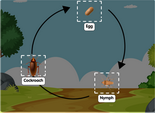Ear diagram labelling game
Ears allow us to make use of our sense of hearing. Such a sense, in turn, lets us enjoy the sounds of our world, from listening to our teammates in video games or sports, to jamming out to the beat of our favourite music.
Interactive Learning with Ear Diagram Labelling
The human ear is a marvel of natural engineering. Understanding its complex structures can be fascinating, and what better way to grasp its intricacies than by labelling the ear? With today's digital age, there's an interactive way to learn - through an ear diagram to label online.
The Importance of Labelling the Ear
Being able to label an ear helps students visualize and remember the distinct parts that make up our auditory system. Not only does it give them a clearer understanding of how we hear sounds, but it also lays the foundation for more advanced topics in biology and human anatomy. When students interact with a label diagram of ear, they are not just memorizing names; they are comprehending how these components work together to allow us to hear.
Interactive Labelling: A Modern Approach to Learning
Traditional classroom methods involve studying static images in textbooks, which might not always be engaging. However, interactive ear diagrams change the game. Platforms like ESL Games Plus have introduced an exciting ear diagram to label, which allows students to drag and drop names of the ear's parts to their correct positions. This kind of interactive learning ensures better retention and understanding of the subject matter.
Features of the Online Label Ear Diagram Game
When students visit the page to label an ear, they are greeted with a clear image of the ear's anatomy. As they move the cursor over various sections, they get brief descriptions or hints, guiding them on where to place each label. This feature ensures that even if a student is unsure, they can still learn through trial and error.
Additionally, upon completing the label ear diagram activity, instant feedback is given. This helps learners understand any mistakes and rectify them, ensuring that the learning curve continues.
Expanding Knowledge with Additional Science Games
After mastering the ear diagram, students can venture into a world of other exciting topics on ESL Games Plus Science Games. These range from interactive quizzes about the human body to games that cover various scientific phenomena. Such a platform ensures that the thirst for knowledge is continually quenched in an engaging and interactive manner.
Conclusion
The auditory system is a complex and intricate mechanism that allows us to connect with our surroundings. By labelling the ear through interactive platforms, learners can have a hands-on approach to understanding this marvel of nature. Dive into the digital world of learning and discover the wonders of the human body, starting with the ear. Happy labelling!
The ear itself is an intricate organ divided into three primary parts – the outer ear, middle ear, and inner ear.
Sound is first collected by the pinna – this is the visible part of the ear we typically see on our heads. The pinna gathers and funnels the sound into the ear canal, causing it to strike the eardrum.
When the eardrum vibrates, it also moves a trio of tiny bones in your middle ear. These three bones are known as your malleus, incus and stapes, and are the tiniest bones in the human body.
The vibrations of sound pass into the inner ear through an organ known as the cochlea, which is filled with fluid. Sound causes the fluid inside to vibrate as well, moving hair-like cells to-and-fro like an anemone under the sea. These movements are passed as signals to the nerves connected to the inner ear, and are transmitted into the brain. The information received from the vibrations is processed into hearing.
Our ear diagram labelling game is a helpful resource for learning about the anatomy of the human ear.











